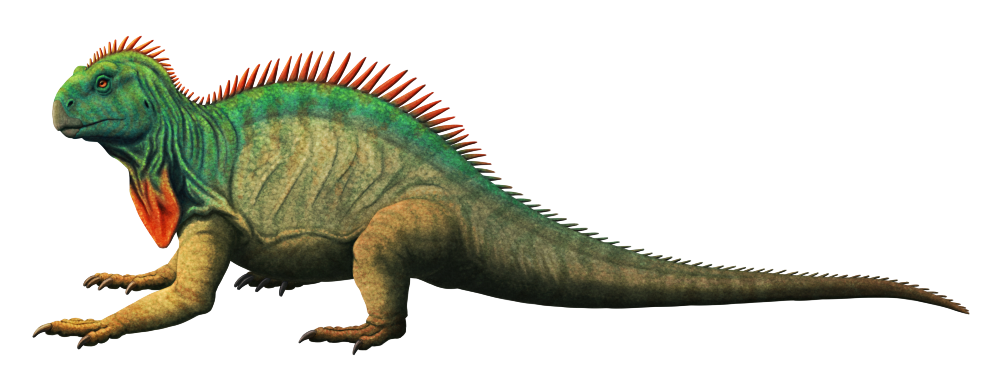Allokotosaurs were a group of mostly-herbivorous archosauromorph reptiles, distantly related to the ancestors of crocodiles, pterosaurs, and dinosaurs. They lived across Eurasia, Africa, and North America during the mid-to-late Triassic period, and their lineage included some weird and diverse forms – such as the bull-horned Shringasaurus, the long-beaked Teraterpeton, and possibly also the gliding kuehneosaurids.
Spinosuchus caseanus here was yet another one of these Triassic allokotosaurian weirdos, part of the trilophosaurid family and closely related to Trilophosaurus and Teraterpeton.
Living about 221-212 million years ago in what is now northwest Texas, USA, Spinosuchus was around 2.2m long (~7’2″) and had distinctive elongated neural spines along the vertebrae of its back and the base of its tail, forming a “high back” or short “sail”. Since it’s only known from a partial spinal column the rest of its anatomy isn’t known for certain, but it probably had body proportions similar to its close relative Trilophosaurus, with sprawling limbs and a short-snouted beaked head adapted for herbivory.
Like many other fossil “sailbacked” animals the exact function of Spinosuchus’ elongated vertebrae is unclear, but the structure may have been used for visual display. I’ve depicted it here with a speculative frill of colorful elongated scales, along with a flashy dewlap.

